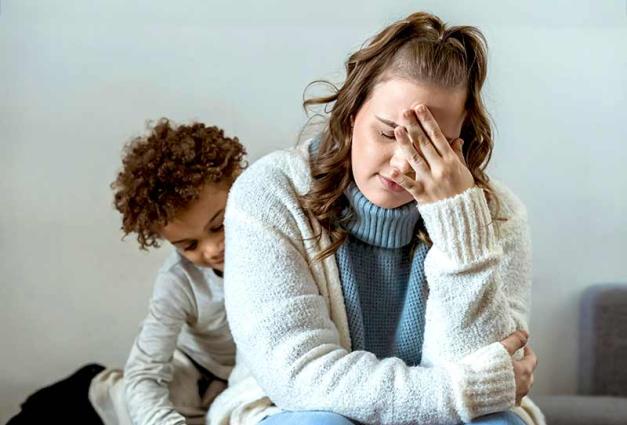The video recording turns on as the police officer gets out of his patrol car, camera bobbing as he approaches a young Black man in a sedan. “You know about your taillight?” The driver gives him a quizzical look. “Your. Left. Rear. Tail. Light. Yeah?” The officer draws out each syllable, as if he were talking to a child, before dismissing him with a curt warning. In another part of the city, a second officer has stopped a White woman, who was talking on her cell phone while driving. “Listen, ma’am,” he says, almost apologetically, “I just want you to be safe.” The officer explains the procedure for dealing with the ticket, sends the driver on her way, and turns off his camera.
In recent years, body camera recordings have played an important role in revealing cases of police violence or misconduct. We pay less attention to the thousands of everyday encounters caught on camera, like the ones above, two of the traffic stops our research team analyzed. These routine encounters are both common—over 18.5 million people are pulled over each year—and consequential for community trust. Indeed, research on procedural justice has shown that citizens’ personal experiences in these interactions shape their willingness to cooperate with law enforcement, and even whether they follow the law themselves.
An important piece of the puzzle is missing, however: how police officers interact with the public. Police reports can tell you whether an officer issued a ticket or searched a car, but they don’t capture whether the officer treated a person with respect or condescended to them. Body cameras record these nuances, letting us observe how officers communicate with the public. In doing so, they open a window to the disparate experiences Black and White citizens have with law enforcement.
Racial Gaps in What Officers Say and How They Say It
Take language, for example. An officer can communicate the same idea in a way that communicates respect (“Could I see your license and registration, please?”) or not (“Hand over your license and registration, bro.”). Our team sampled brief exchanges between officers and White and Black drivers from transcribed body camera recordings, then asked participants to rate the respectfulness of officers’ words while keeping them blind to the driver’s race. We then taught a computer model to identify the parts of language that mapped onto these perceptions of respect, and then used those features to estimate officer respect in an entire month of traffic stop recordings.
Human raters and algorithms agreed: officers used language that was perceived as more respectful when talking to White drivers compared to Black drivers. For example, police officers were more likely to reassure White drivers and show concern for their safety, while they were more likely to address Black drivers with informal titles like “Bro” or “Dude” and pepper them with questions. These gaps in respect emerged in the earliest moments of these encounters, and persisted after controlling for factors such as the local crime rate or officer’s race.
These disparities go beyond what officers say to how they say it. We also examined police officers’ tone of voice in traffic stops of Black and White men. Our participants listened to short snippets of officer speech that were filtered to mask officers’ words but preserve their tone. Even in this subtle channel of communication, listeners perceived officers’ tone of voice as communicating more respect, friendliness, and ease with White versus Black men. And although this specific study was limited to only male drivers, we again found that racial disparities could not be explained by the officer’s race gender, or other aspects of the stop.
More than Words: The Impact of Officer Communication
There’s no law that requires police officers to be nice, so why should we care about their demeanor? The answer is that officers act not only as individuals, but as representatives of the state. As officers communicate deference or disdain towards the public, citizens learn what the state thinks of them. And our data suggest that Black and White citizens learn quite different things from their conversations with the police.
To look at the consequences of officers’ communication, we visited a Department of Motor Vehicles office, where we asked DMV customers to listen to audio clips of officer speech and give their impression of that city’s police department: the extent to which the department cared about the community and was deserving of trust, for instance. All of the clips came from a single police department, but unbeknownst to our participants, some customers heard body camera recordings of officers speaking to Black male drivers, while others heard interactions with White male drivers.
The crowd at the DMV came from all walks of life, but our findings were remarkably consistent. Those who heard Black-directed speech reported less respectful officer demeanor than those who heard White-directed speech, just as we found before. More importantly, these racial disparities lowered institutional trust. Customers who were exposed to police interactions with Black drivers had a more negative assessment of the department compared to those who were only exposed to interactions with White people.
Policing In Black And White
Racial disparities in policing extend beyond extreme uses of force: they are woven into the fabric of everyday conversations between community members and law enforcement. This matters because police stops are institutional interactions where officers literally give voice to the law. Our research shows that body cameras can play an important role in bringing such disparities to light and showing their consequences. Their greatest promise, perhaps, lies in capturing change. As our national conversation seeks to reimagine public safety, we can use body camera footage to observe how reforms change the experiences of those on the ground—and on camera.
For Further Reading
Camp, N. P., Voigt, R., Jurafsky, D., & Eberhardt, J. L. (2021). The thin blue waveform: Racial disparities in officer prosody undermine institutional trust in the police. Journal of Personality and Social Psychology. https://doi.org/10.1037/pspa0000270
Voigt, R., Camp, N. P., Prabhakaran, V., Hamilton, W. L., Hetey, R. C., Griffiths, C. M., ... & Eberhardt, J. L. (2017). Language from police body camera footage shows racial disparities in officer respect. Proceedings of the National Academy of Sciences, 114(25), 6521-6526. https://doi.org/10.1073/pnas.1702413114
Nick Camp is an Assistant Professor of Organizational Studies at the University of Michigan. He studies racial inequality at the boundaries between structures and individuals.



